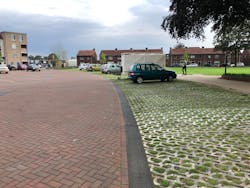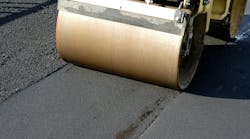How Cities are Engaging Citizens in Best Rainfall Practices
For some, the phrase ‘A River Runs Through It’ may bring to mind the 1992 movie directed by Robert Redford starring Brad Pitt. For others, it may conjure up such memorable images as Paris and the Seine, London and the Thames or on this side of ‘the pond’ the Hudson which forms a natural boundary between New York and New Jersey.
In all of these instances, the river serves as a lifeline. However increasingly in cities around the world, new types of rivers are being formed which in contrast to the aforementioned bodies of water, are contributing to the destruction of public and private property and serving to spike insurance rates.
The rivers in question of course, are the ‘man made’ ones brought on by two key contributors: urban landscapes that are dominated by hard, impermeable surfaces… together with the increasing incidence of historic downpours… brought on by climate change.
When a Big Storm Hits
A telling document entitled “Streams in the City… It’s a Hard (Surface) Life” prepared by the EPA notes that a growing number of cities are now 75 to 95% impervious and consequently, there is “more flooding during rainstorms… and natural channels can easily become overwhelmed when a big storm hits… contributing to everything from downstream pollution to stream bank erosion.”
That particular document was geared for middle school students and is hardly news to the likes of civil engineers or landscape professionals. But it was making an important contribution all the same, in terms of helping to wake up everyday citizens. Including our youth, who invariably will bear the brunt of the climate-related disasters that await city dwellers in the decades to come as a result of global warming.
As part of raising awareness about what everyday citizens can do to counter the challenges of flooding, a growing number of cities have adopted a 180-degree messaging shift – from emphasizing the need to shunt water offsite as quickly as possible to the prevailing best practice tied to the LID principles of absorbing as much rainfall where it falls.
The Vermont Department of Environmental Conservation has gone as far as to create a 54-page document specifically geared for residential sites that highlights solutions ranging from rain barrels, cisterns and rain gardens to permeable paving.
Despite such well-intentioned efforts, consumers have a long way to go to come around to embracing such practices; a challenge made worse by the fact that over 90% of households own at least one vehicle. And two of the most popular surfaces used for driveways due to a combination of cost and convenience are asphalt and concrete. Surfaces with zero porosity.
Getting Rain Ready on the Homefront
Recognizing that education alone may not convince the public to embrace the sponge city/keep the rainfall where it falls approach needed to reduce the severity of urban flooding, the City of Ottawa, Canada is now offering financial incentives for homeowners as well, as part of what is known as its Rain Ready program.
Julia Robinson, who is the project lead for the City of Ottawa’s Climate Resilience Strategy (which includes the Rain Ready program) said that “if we are able to achieve a scale of management of stormwater runoff on private property (the city’s findings show that) it would really contribute to helping reduce the harmful runoff. Both from a water quality and water quantity perspective.”
And while Ottawa is actively seeking to engage and support the involvement of the landscape architect community tied to such projects as rain gardens, the city is also witnessing a spike in demand for permeable paving solutions, catalyzed by Rain Ready incentives of up to $5,000 CDN (about $3,500 USD) per driveway.
Toward that end, one company in particular –PurePave Technologies, which happens to be headquartered in Ottawa, has corralled a large percentage of the residential driveway projects awarded and in the process is realizing an 800% year over year growth.
Company CEO Taylor Davis said the reality is that many consumers have opted for PurePave surfaces because of the curb appeal and perceived added value to their homes by virtue of the fact they are made from a natural aggregate with a polymer bonding agent, so that multi-coloured stones can be used. And as such, some homeowners have selected design patterns that can be incorporated into the driveways. These surfaces are designed to absorb the equivalent of up to 14,000 cubic metres of rainfall per hour; and University of Ottawa tests have confirmed that the surface is six times stronger than asphalt and 1.6 times stronger than cement, which translates into a life expectancy of 40 years.
PurePave also worked on a similar project for the Toronto Metropolitan University (formerly Ryerson University) and most recently for the Toronto Zoo.
Rethinking Stormwater Solutions
For two years now, Davis says he has had to contend with the disruption that is occurring near to where he lives, due to a stormwater project on Mossdale Road in Ottawa.
“It’s incredibly disruptive for residents with the street dug up and stormwater concrete everywhere,” said Davis. All of which he says, “is because the city’s infrastructure can no longer handle the volume of water that’s coming down. In fact, they had all the storm manholes stuffed with filter cloth because they were getting jammed and they’re having to keep pumping them out.”
Rather than tackling the same problem with the same solution that cities have been deploying for hundreds of years – while expecting different results – Davis said that his company is now in active discussion with municipal staff in cities like Ottawa and Toronto as well as a handful of transportation infrastructure and environmental service companies to explore more modern solutions, such as the above-mentioned idea of more extensive, community-wide use of permeable surfaces. An approach which together with bioengineered solutions and public parks and other spaces that double as flood catchment areas could significantly reduce municipal infrastructure costs.
So instead of expanding the water handling capacity of the city, it could be far more cost-effective to ramp up a program like Rain Ready on the consumer and commercial land side of things while implementing other ‘sponge city’ solutions.
“If all of the residential driveways were using our surface, it could eliminate the need for stormwater ponds altogether freeing up land to build more homes or create more neighbourhood amenities such as public parks,” said Davis.
What Davis is essentially alluding to is a potential paradigm shift, whereby planners, civil engineers, landscape architects and other related professions totally rethink how rainwater is being managed both in residential and commercial property settings as well as public spaces, including university campuses, municipal buildings, or other public amenities.
And certainly, with the ongoing push for densification in urban centres along with the increased frequency of storms, it is a change in mindset that could not happen sooner.
About the Author
Mark Wessel
Mark Wessel is a freelancer writer. Wessel can be reached at [email protected].


